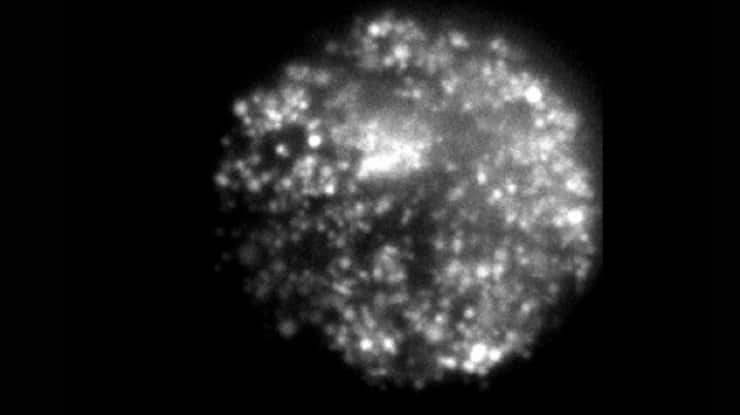Abnormal aggregations of certain proteins in the brain are a prominent feature of Parkinson’s and other neurodegenerative diseases, but the role those same proteins might play in the normal brain has been unknown. Now, new research by UC San Francisco neuroscientist Robert Edwards, MD, has uncovered the role of one such protein, known as alpha-synuclein,…
Category: Neurology
Necroptosis Is Activated In Alzheimer's Disease
A new pathway for brain cells to become fated to die during Alzheimer’s disease has been identified. The study was conducted by Arizona State University Banner Health neuroscientist Salvatore Oddo and colleagues from Phoenix’s Translational Genomics Research Institute (TGen) as well as the University of California, Irvine, and Mount Sinai in New York. The research…
Poor Sleep Leads To Increase In Amyloid Beta
Disrupting just one night of sleep in healthy, middle-aged adults causes an increase in amyloid beta, a brain protein associated with Alzheimer’s disease, a small study suggests. And a week of tossing and turning leads to an increase in another brain protein, tau, which research has linked to brain damage in Alzheimer’s and other neurological…
Overactive Microglia May Cause Alzheimer’s Neurodegeneration
A surprising effect of microglia has been demonstrated for the first time by researchers at the University of Zurich. If these scavenger cells of the brain lack the TDP-43 protein, they not only remove Alzheimer’s plaques, but also synapses. This removal of synapses by these cells presumably lead to neurodegeneration observed in Alzheimer’s and other…
Spinal Cord Nerve Cells Positional Decoding in Development
Cells destined to become nerve cells in developing mouse embryos use two different signals spreading from opposite sides of the spinal cord – the back and belly side – to measure their position accurately. Based on this map, they turn into the appropriate nerve cell type. These are the findings from a new a study…
Intracellular Vesicle Rupture Common Amyloid Protein Mechanism
Abnormal proteins found in Alzheimer’s disease, Parkinson’s disease, and Huntington’s disease all share a similar ability to cause damage when they invade brain cells, a Loyola University Chicago study has found. The finding potentially could explain the mechanism by which Alzheimer’s, Parkinson’s, Huntington’s, and other neurodegenerative diseases spread within the brain and disrupt normal brain…
Different Onset Patterns of Epileptic Seizures Have Different Mechanisms
At the beginning of an epileptic seizure, differing characteristics of brain tissue surrounding the seizure’s origin site may determine which of two main patterns of brain activity will be seen, according to a new study. Electrical activity in the brain at the onset of an seizure in epilepsy usually follows either a “low amplitude fast”…
Huntington’s Gene Mutation Disrupts The Nuclear Pore Complex
Disruptions in the movement of cellular materials in and out of a cell’s control center — the nucleus — appear to be a direct cause of brain cell death in Huntington’s disease, Johns Hopkins researchers report. They also say laboratory experiments with drugs designed to clear up these cellular “traffic jams” restored normal transport in…
Molecules Driving Brain Inflammation In Multiple Sclerosis Identified
Key molecules that drive brain inflammation in a mouse model of multiple sclerosis have been identified by scientists from the University of North Carolina School of Medicine. These molecules are present at abnormally high levels in the brains of humans with the disease. Brain inflammation is a key component of multiple sclerosis, Alzheimer’s, Parkinson’s, ALS,…
